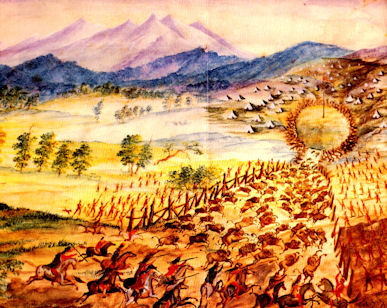
 | ||||
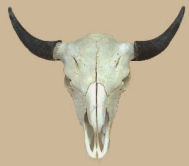
The buffalo was a life source for the Salish providing them with food, shelter, clothing and tools. There was little that they did not make use of from the slain animals.
FOOD
The Salish constructed tripods or quadpods as drying racks for strips of buffalo meat. Smoke created by a small fire below the rack kept meat free of insects. The dried meat was then pounded into a powder and mixed with dried huckleberries, service berries and tallow to make pemmican that provided them with a high source of energy. The pemmican was stuffed into flat rawhide bags and stored for winter. The average buffalo provided 525 pounds of pemmican. Fr. DeSmet reported that in one hunt the Salish delivered 5,000 pounds of dried buffalo meat to St. Mary’s Mission in bales weighing 80 pounds each.
Bone marrow made tallow as an essential part of their diet.
Warriors were very particular about their hair and they used raw or cooked bone marrow and massaged it into their hair and scalps.
SHELTER
- Summer hides provided tipi covers
- It took 9 or 10 buffalo skins to make a tipi
- Buffalo mats covered the ground inside the tipi
- Buffalo robes covered the Indians on cold nights
CLOTHING
- Warriors wore hide shirts – hair in for winter, hair out for summer
- Moccasin soles from rawhide, tops from buckskin
- Leggings were made of elk hide rather than buffalo hide
- Brain tissue was used by the women for tanning hides
TOOLS
- Bone splinters were used as awls
- Shoulder blade for a spade or pick ax
- Ribs for sleds
- Sinew was used for thread and bowstring
- Hair used for cordage
- Bladders were used for small bags and water pouches
- Rawhide was used for large bags
- Snowshoes were made of birch framework and a network of buffalo rawhide
- Bull boats were made of tree limbs or poles, bound together with thongs. Several buffalo hides were sewn together and stretched over the framework and the seams were smeared with a combination of fir pitch and tallow.
- Buffalo chips were used for fires on hunting trips. The chips produced heat with no smoke to alert enemies.
SPIRITUAL
The buffalo skull was used in:
- Prayer
- Ceremonies
- Sun Dance
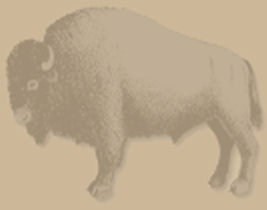
The buffalo is for the Indian…something more than manna in the desert. For there is no fatigue he will not endure, no enemy he will not defy, no form of death he will not face, to get the great beasts.
~Father Nicolas Point, S.J., a diarist for the missionaries who accompanied the “people” on their winter hunt
Bitter Root Salish and the Buffalo
THE BUFFALO HUNT
The Salish believed in taking care of their resources. They never over hunted the herds, taking only what they needed and never hunting for sport. The buffalo (bison) were greatly respected by the tribes, who saw them as relatives and acknowledged that the well-being of humans and buffalo was interrelated.
When hunting, they had to plan ahead because of enemy tribes. Both the Salish and the Blackfeet claimed the hunting grounds east of the continental divide, creating intense enmity between the two tribes.The Nez Perce and Flatheads often banded together on buffalo hunts as a means of bettering the odds with the Blackfeet.
The main hunt came in summer when the buffalo were fat, and the hides had less hair which made tanning easier. The robes and the best meat went to the hunter who killed the buffalo. The men butchered the buffalo only if the hunt was far from their encampment otherwise the women butchered and cut up the buffalo.
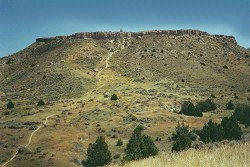
Their favorite method of hunting was to drive the herd over a cliff, known as a Buffalo Jump. If a buffalo did not die resulting from the fall off the cliff, women and old men would follow with clubs and finish off the injured buffalo.
During a prairie hunt, Indians would cover themselves with a buffalo hide, creep into the herd and then slip it off in the middle of the herd. Indians also hunted by horseback using the mustang horses that were found roaming the prairies. It wasn’t unusual for a hunter to ride four or five miles before getting a good shot.
Madison Buffalo Jump
Near Three Forks, MT
MANY USES OF THE BUFFALO
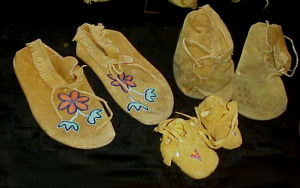
Moccasins on display at Historic St. Mary's Mission
Buffalo Skull

Watercolor depicting a buffalo hunt
by Fr. Nicholas Point, S.J.
click image for larger view
Last Update: 8/24/2016
Historic St. Mary's Mission, Inc. * All Rights Reserved
Web Site Design by S&J Enterprises
406-777-5734
Email: stmary@cybernet1.com
www.saintmarysmission.org
P.O. Box 211
315 Charlo Street
Stevensville, MT 59870

